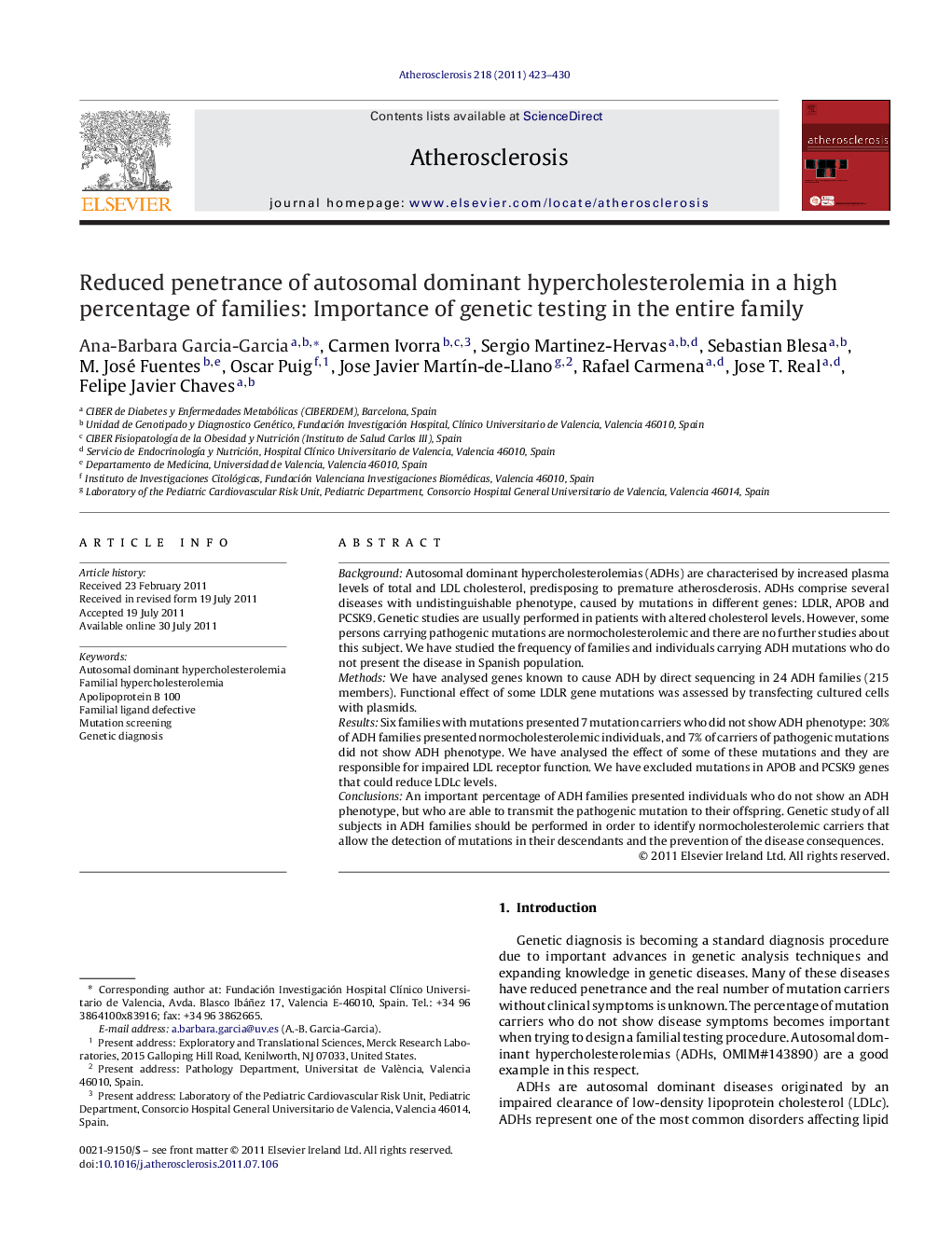| Article ID | Journal | Published Year | Pages | File Type |
|---|---|---|---|---|
| 5950092 | Atherosclerosis | 2011 | 8 Pages |
BackgroundAutosomal dominant hypercholesterolemias (ADHs) are characterised by increased plasma levels of total and LDL cholesterol, predisposing to premature atherosclerosis. ADHs comprise several diseases with undistinguishable phenotype, caused by mutations in different genes: LDLR, APOB and PCSK9. Genetic studies are usually performed in patients with altered cholesterol levels. However, some persons carrying pathogenic mutations are normocholesterolemic and there are no further studies about this subject. We have studied the frequency of families and individuals carrying ADH mutations who do not present the disease in Spanish population.MethodsWe have analysed genes known to cause ADH by direct sequencing in 24 ADH families (215 members). Functional effect of some LDLR gene mutations was assessed by transfecting cultured cells with plasmids.ResultsSix families with mutations presented 7 mutation carriers who did not show ADH phenotype: 30% of ADH families presented normocholesterolemic individuals, and 7% of carriers of pathogenic mutations did not show ADH phenotype. We have analysed the effect of some of these mutations and they are responsible for impaired LDL receptor function. We have excluded mutations in APOB and PCSK9 genes that could reduce LDLc levels.ConclusionsAn important percentage of ADH families presented individuals who do not show an ADH phenotype, but who are able to transmit the pathogenic mutation to their offspring. Genetic study of all subjects in ADH families should be performed in order to identify normocholesterolemic carriers that allow the detection of mutations in their descendants and the prevention of the disease consequences.
